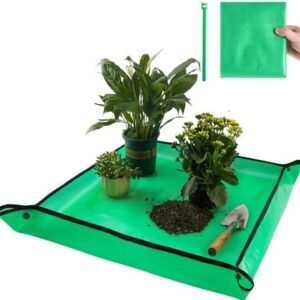If you’re looking for an impactful way to combat climate change, one unexpected solution may lie right in your own backyard – or more specifically, in your wildlife garden. Creating and investing in a wildlife garden may just be one of the most effective tools we have to address the environmental challenges we face today.
But how exactly does a wildlife garden help combat climate change? And what steps can you take to create your own little haven for nature? Let’s delve into the world of wildlife gardening and explore its benefits for the environment.
First and foremost, a wildlife garden provides crucial habitat for a variety of species, from birds and butterflies to bees and small mammals. As natural habitats continue to be destroyed and fragmented, these creatures are left with fewer places to live and thrive. By creating a wildlife garden in your own backyard, you are essentially providing these animals with a much-needed refuge.
This is especially important in the face of climate change, as many species are struggling to adapt to shifting temperatures and ecosystems. By offering a safe haven in your garden, you are helping to protect and support local wildlife in the face of these challenges.
But it’s not just about providing a home for animals – a wildlife garden can also play a key role in sequestering carbon dioxide from the atmosphere. Plants, especially trees and shrubs, are natural carbon sinks, absorbing carbon dioxide during photosynthesis and storing it in their biomass. By planting a diverse array of native plants in your garden, you can help capture and store carbon, thereby reducing the amount of this greenhouse gas in the atmosphere.
Not only that, but a wildlife garden can also help combat climate change by reducing the need for chemical pesticides and fertilizers. These chemicals can have a detrimental impact on the environment, contaminating waterways and harming beneficial insects and wildlife. By creating a more natural and balanced ecosystem in your garden, you can help reduce your reliance on these harmful substances and promote a healthier environment for all.
In addition to its environmental benefits, a wildlife garden can also bring joy and beauty to your life. Watching birds flit from branch to branch, butterflies dance among flowers, and bees buzz around collecting nectar can be a truly magical experience. It can provide a sense of connection to the natural world and a feeling of peace and tranquility in an increasingly hectic and urbanized environment.
So, how can you create your own wildlife garden and start reaping these benefits for yourself and the planet? It’s actually quite simple. Start by choosing native plants that are well-adapted to your region and provide food and shelter for local wildlife. Research the plants that are native to your area and aim for a diverse array of species to support a wide range of animals.
Next, incorporate water sources such as bird baths, ponds, or small streams to provide drinking and bathing opportunities for wildlife. Adding a few rocks or logs can also create hiding places for small creatures and a place for them to bask in the sun.
Lastly, avoid the use of chemical pesticides and fertilizers in your garden. Instead, opt for natural pest control methods such as planting companion plants, encouraging beneficial insects, and practicing good garden hygiene. This will help maintain a healthy and thriving ecosystem in your garden while also protecting the environment from harmful chemicals.
In conclusion, investing in a wildlife garden is not just a way to beautify your outdoor space – it is a powerful tool for combating climate change and supporting biodiversity. By creating a haven for wildlife in your own backyard, you are contributing to the health of the planet and creating a more sustainable future for generations to come. So grab your gardening gloves, roll up your sleeves, and start planting for a better world.






